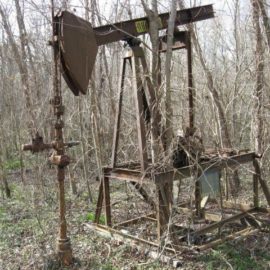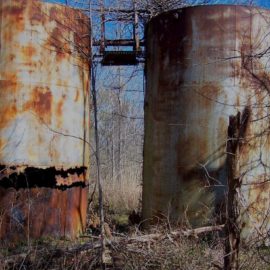
163 abandoned oil pumps to be capped and all are on Federal land.
The Department of the Interior said Wednesday it will begin capping a fraction of the more than 4,600 abandoned oil and gas wells in Louisiana this year, though when that process will conclude is uncertain. The government plans to cap 163 abandoned wells in the state that exist on federal land. All told, it will spend $33 million to cap 277 such wells across the country, officials said. Many of those wells, abandoned over recent decades by struggling oil and gas companies, release methane into the atmosphere, the carbon-rich main ingredient of natural gas that has been linked to global warming. Funding for the project stems from the Infrastructure Investment and Jobs Act. The government’s latest investment in Louisiana is separate from the $111 million it pledged in February to plug and clean wells in the state.
nola.com
With so few to be capped, it took awhile to identify and prioritize the ones that will be capped.
Identifying the 277 wells this time around “took time in and of itself,” Interior Secretary Deb Haaland said in a Wednesday press conference. “There’s a lot more work to do, and this will be ongoing for quite some time.” Wells to be plugged in the latest round include: Atchafalaya National Wildlife Refuge: 9, Black Bayou Lake National Wildlife Refuge: 6, Darbonne National Wildlife Refuge: 68, Jean Lafitte National Wildlife Refuge: 10, Lacassine National Wildlife Refuge: 11 and Upper Ouchita National Wildlife Refuge: 59.
All told, $250 M will be allocated to this project.
All told, the infrastructure bill allotted a pool of $250 million to continue capping wells on federal lands across the country, a process that will play out in stages in the coming years. The funding will be distributed to four bureaus within the Departments of the Interior and Agriculture. “Wells are polluting our backyards, recreation areas, streams, our public spaces across the country,” said Infrastructure Coordinator Mitch Landrieu, the former New Orleans mayor. “These investments to clean up hazardous sites will create good paying union jobs, catalyze economic growth and revitalization in neighborhoods, and reduce dangerous methane leaks.” Louisiana has 4,605 documented wells, the 10th highest number of orphan wells of any state in the U.S. But state officials say there are even more orphan wells that have yet to be found. Millions of Americans live within a mile of an orphaned well. In addition to methane emissions, those wells can contaminate groundwater and seep toxic chemicals into the soil.
The whole project is based on the methane emissions both before and after the plugging.
The federal departments will use methane emissions testing to help them decide which wells they should plug first. They will also test methane emissions after plugging to ensure major leaks have stopped. The government may also prioritize wells that are clustered together, or located near residential neighborhoods, said Laura Daniel-Davis, the principal deputy assistant secretary for land and mineral management. The well-plugging project is part of the Biden administration’s Justice 40 initiative, which pledges to send 40% of the benefits from federal climate spending to low-income, rural or minority neighborhoods. Those neighborhods are often impacted by environmental pollution.
It is a start and hopefully, eventually, money will be found to do the rest of them.



